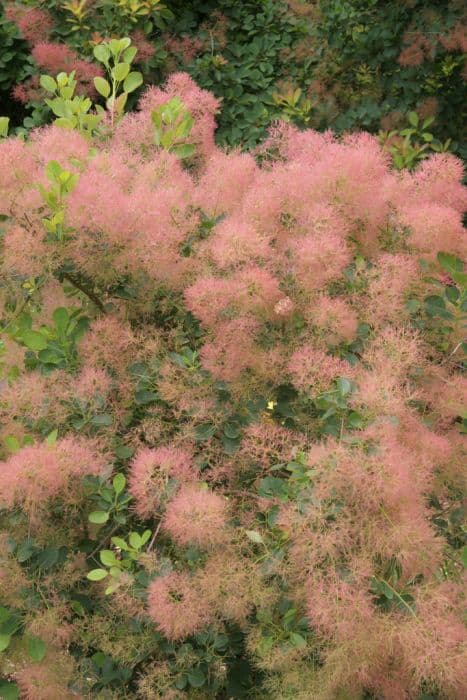Cut-leaved stag's horn sumach Rhus typhina 'Dissecta'

ABOUT
'Dissecta' is an open, spreading, suckering deciduous shrub with fern-like, incised leaves turning red and orange in autumn. Female, with conspicuous crimson fruit clusters in autumn
About this plant
 Names
NamesFamily
Anacardiaceae.
Synonyms
Staghorn Sumac, Cutleaf Staghorn Sumac, Dissected-Leaf Staghorn Sumac, Laciniata.
Common names
Rhus typhina 'Dissecta'.
 Characteristics
CharacteristicsLife cycle
Perennials
Foliage type
Deciduous
Color of leaves
Green
Flower color
Greenish-yellow
Height
10-25 feet (3-7.6 meters)
Spread
10-25 feet (3-7.6 meters)
Plant type
Shrub
Hardiness zones
3-8
Native area
North America
Benefits
 General Benefits
General Benefits- Ornamental Appeal: Rhus typhina 'Dissecta', commonly known as Staghorn Sumac, has a distinctive architectural shape, with deep-cut leaflets and a velvety texture on young branches that add visual interest to landscapes.
- Drought Tolerance: Staghorn Sumac is drought-resistant, making it suitable for xeriscaping and low-maintenance gardens, especially in areas with water scarcity.
- Erosion Control: The extensive root system of Staghorn Sumac helps stabilize soil and control erosion on slopes and banks.
- Wildlife Habitat: The plant produces fruit clusters that serve as a food source for birds and small mammals, enhancing biodiversity and supporting local wildlife.
- Autumn Foliage: Staghorn Sumac provides stunning autumn color, with leaves that turn vibrant shades of orange, red, and yellow, contributing to seasonal interest in the landscape.
- Adaptability: This species is adaptable to a wide range of soil types, pH levels, and environmental conditions, making it a versatile choice for many different settings.
- Rapid Growth: Staghorn Sumac has a fast growth rate, quickly establishing itself and filling in areas in garden designs or restoration projects.
- Low Maintenance: Once established, Staghorn Sumac requires minimal care, making it an ideal choice for gardeners seeking a low-effort plant.
- Naturalizing Effect: Given room to spread, Staghorn Sumac can create a naturalized area, replicating the plant's native habitat and contributing to a natural, wild look in landscape design.
 Medical Properties
Medical Properties- Antioxidant: Rhus typhina 'Dissecta' may contain components that have antioxidant properties, which help in neutralizing free radicals in the body.
- Anti-inflammatory: The plant has been considered for its potential anti-inflammatory effects that could help with conditions associated with inflammation.
- Gastrointestinal aid: There is some traditional use of the plant for treating gastrointestinal issues, although scientific support for this use is limited.
- Antimicrobial: Parts of the plant might exhibit antimicrobial activity, which could be useful in preventing or treating infections.
 Air-purifying Qualities
Air-purifying QualitiesThis plant is not specifically known for air purifying qualities.
 Other Uses
Other Uses- The leaves of Staghorn sumac can be used as a natural dye, providing a variety of colors from yellow to dark brown depending on the mordant used.
- Staghorn sumac's dense growth habit makes it suitable for use as a privacy screen or hedge in landscaping projects.
- The plant's extensive root system is effective in preventing soil erosion on slopes and embankments.
- Staghorn sumac is often planted in wildlife gardens as its berries are a food source for birds during the fall and winter months.
- The wood of Staghorn sumac is soft and has been used in the past for making lightweight items like pipes and small carvings.
- The dried fruit clusters of Staghorn sumac can be used as a natural scrubbing brush due to their rough texture.
- The winter silhouette of Staghorn sumac with its prominent seed heads is valued for adding visual interest in the landscape during the colder months.
- The berries have been traditionally used to prepare a lemonade-like beverage called sumac-ade, popular for its tangy flavor.
- Native American cultures have historically used Staghorn sumac in smoking mixtures, known as Kinnikinnick.
- Staghorn sumac provides nectar and pollen for pollinating insects, making it beneficial for supporting local bee populations.
Interesting Facts
 Feng Shui
Feng ShuiStaghorn sumac is not used in Feng Shui practice.
 Zodiac Sign Compitability
Zodiac Sign CompitabilityStaghorn sumac is not used in astrology practice.
 Plant Symbolism
Plant Symbolism- Resilience: The Staghorn Sumac, like many sumac species, is known for its ability to thrive in difficult conditions, symbolizing the ability to persevere and overcome challenges.
- Transformation: This plant has a notable ability to change colors throughout the seasons, representing change and transformation in life.
- Healing: Historically, parts of the Staghorn Sumac have been used for medicinal purposes, symbolizing healing and comfort.
- Protection: Because the Staghorn Sumac grows in dense thickets that provide shelter for wildlife, it is often associated with protection and sanctuary.
 Water
WaterThe Staghorn Sumac, as the Rhus typhina 'Dissecta' is commonly known, prefers even moisture but can tolerate some drought once established. It should be watered deeply about once a week, allowing the soil to dry partially between waterings. During the growing season, each watering should be thorough, providing approximately 1.5 gallons of water for small to medium-sized plants. For larger specimens, water with up to 3 gallons every 1-2 weeks, depending on weather conditions and soil drainage. Reduce the watering frequency in the winter months when the plant is dormant.
 Light
LightThe Staghorn Sumac thrives in full sun to partial shade. It performs best when it receives at least six hours of direct sunlight per day. An ideal spot would be one that is exposed to the bright morning sun with some afternoon shade, although this plant is quite adaptable and can still do well in a sunnier spot.
 Temperature
TemperatureStaghorn Sumac plants are hardy and can withstand a wide range of temperatures. They can survive minimum temperatures of down to -30 degrees Fahrenheit and can handle the heat up to about 100 degrees Fahrenheit. The ideal temperature range for these plants is between 60 and 80 degrees Fahrenheit to promote healthy growth.
 Pruning
PruningPrune the Staghorn Sumac to maintain shape and encourage more vibrant foliage. The best time to prune is in late winter or early spring before new growth starts. It should be pruned every 2 to 3 years to remove any dead or damaged branches and to thin out dense growth which can promote better air circulation and light penetration within the plant.
 Cleaning
CleaningAs needed
 Soil
SoilThe Staghorn Sumac (Rhus typhina 'Dissecta') thrives in a soil mix that is well-draining and rich in organic matter. A good recipe would include garden soil, compost, and coarse sand or perlite. Aim for a soil pH of 5.5 to 7.0, which is slightly acidic to neutral.
 Repotting
RepottingStaghorn Sumac typically does not require frequent repotting as it is often grown as a large shrub or small tree outdoors. However, if grown in containers, repotting every 3-4 years in the spring can help maintain its health.
 Humidity & Misting
Humidity & MistingStaghorn Sumac is adaptable and does not require specific humidity levels to thrive, making it ideal for most outdoor environments where humidity naturally fluctuates.
 Suitable locations
Suitable locationsIndoor
Provide bright light and room to grow.
Outdoor
Full sun, well-draining soil, space to spread.
Hardiness zone
4-8 USDA
 Life cycle
Life cycleThe common name for Rhus typhina 'Dissecta' is Staghorn Sumac. The life cycle begins with germination, where the seed sprouts in early spring, usually in moist, well-drained soil. Juvenile growth progresses rapidly as the plant develops a deep taproot and starts vegetative growth, producing large, deeply cut leaves that resemble ferns or large feathers. As the plant matures into its adult phase, it typically reaches heights of 15-25 feet, develops textured bark, and produces upright clusters of greenish-yellow flowers in summer, which are followed by vibrant red fruiting clusters by autumn. These fruits, called drupes, can persist through winter, providing food for wildlife. The sumac then enters a period of dormancy during winter, shedding leaves before repeating its life cycle in the spring.
 Propogation
PropogationPropogation time
Late winter-early spring
The Staghorn sumac 'Dissecta', known botanically as Rhus typhina 'Dissecta', is typically propagated through root cuttings. This method involves taking a section of the root, usually in late fall to early winter when the plant is dormant. The root cutting, about 4 to 6 inches (10 to 15 cm) in length, should be taken from a healthy parent plant. The cutting is then placed horizontally in a well-draining potting mix, ensuring that it's just barely covered with soil. A warm and moist environment will encourage the development of new shoots. Once new growth is evident and a robust root system has developed, the new Staghorn sumac can be transplanted to a permanent location outdoors. It is crucial to maintain consistent moisture for the young plants until they are well established.
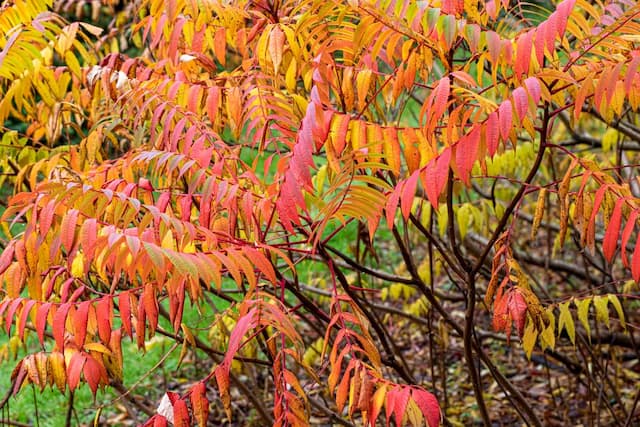
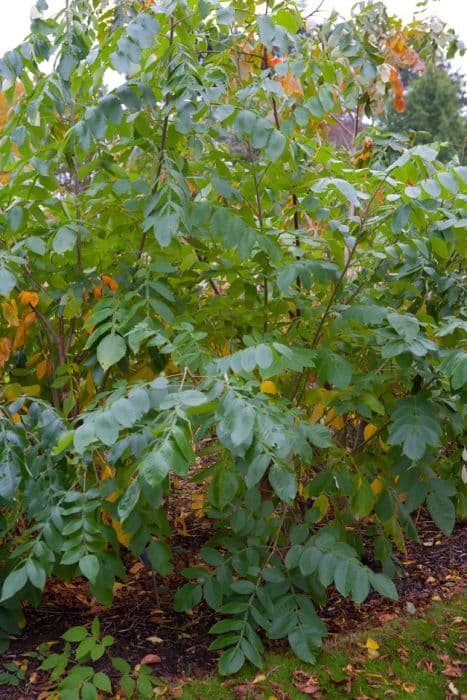
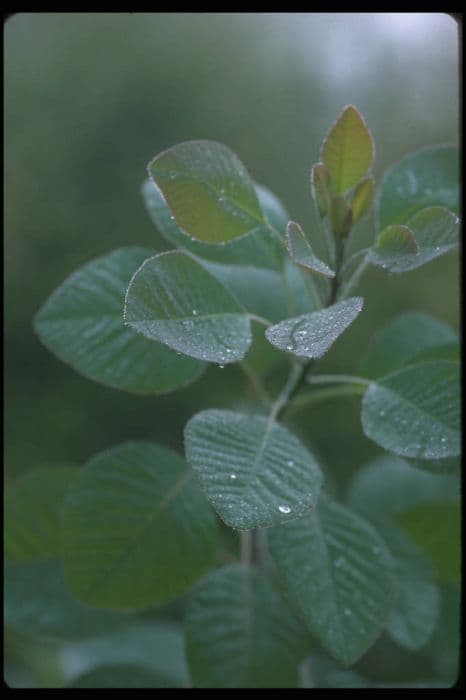
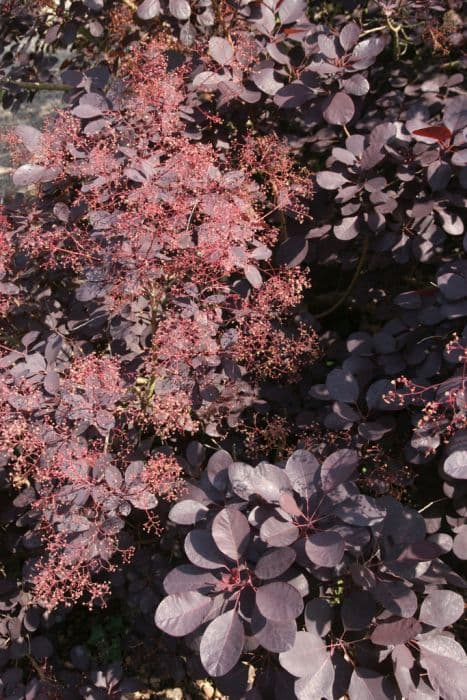
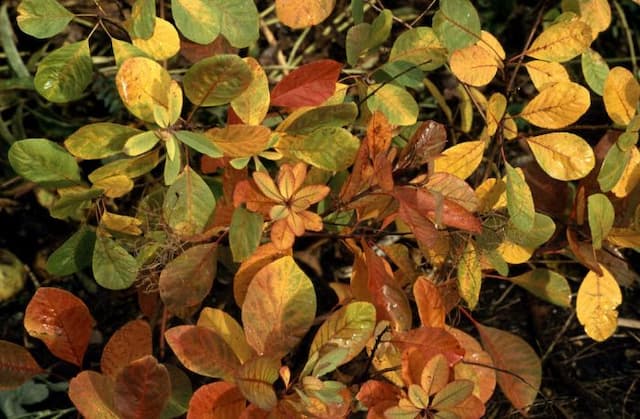

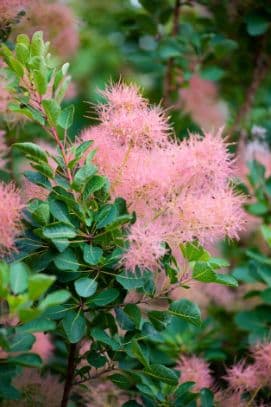
![Smoke tree [Golden Spirit]](/_next/image?url=https%3A%2F%2Fplants-admin.emdemapps.com%2Fimages%2Fplants%2F%2Fimages%2F604b63b450a12.png&w=640&q=75)
